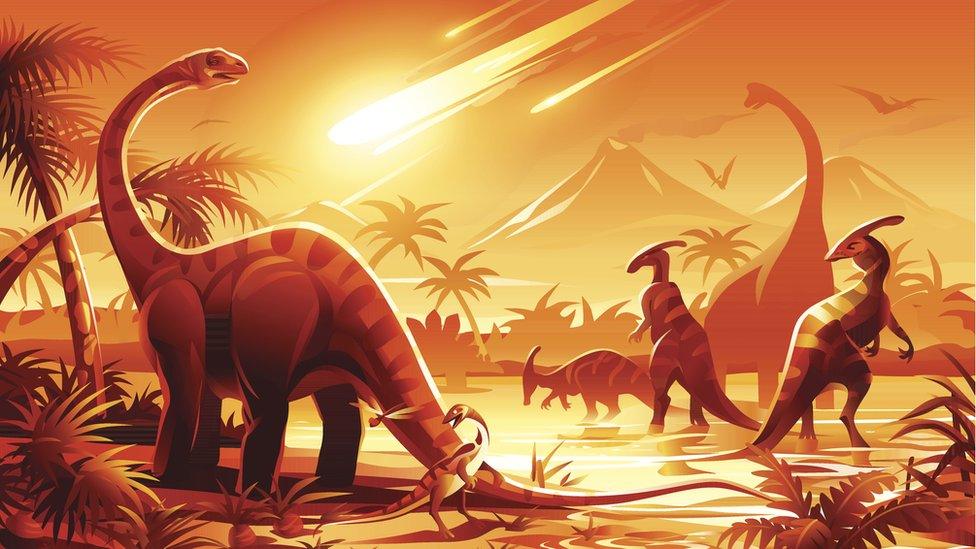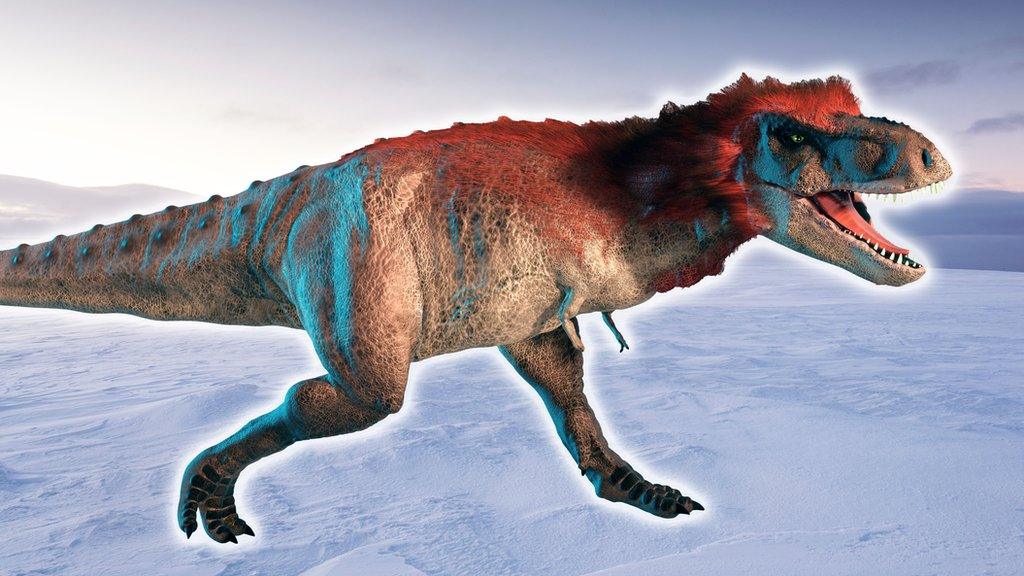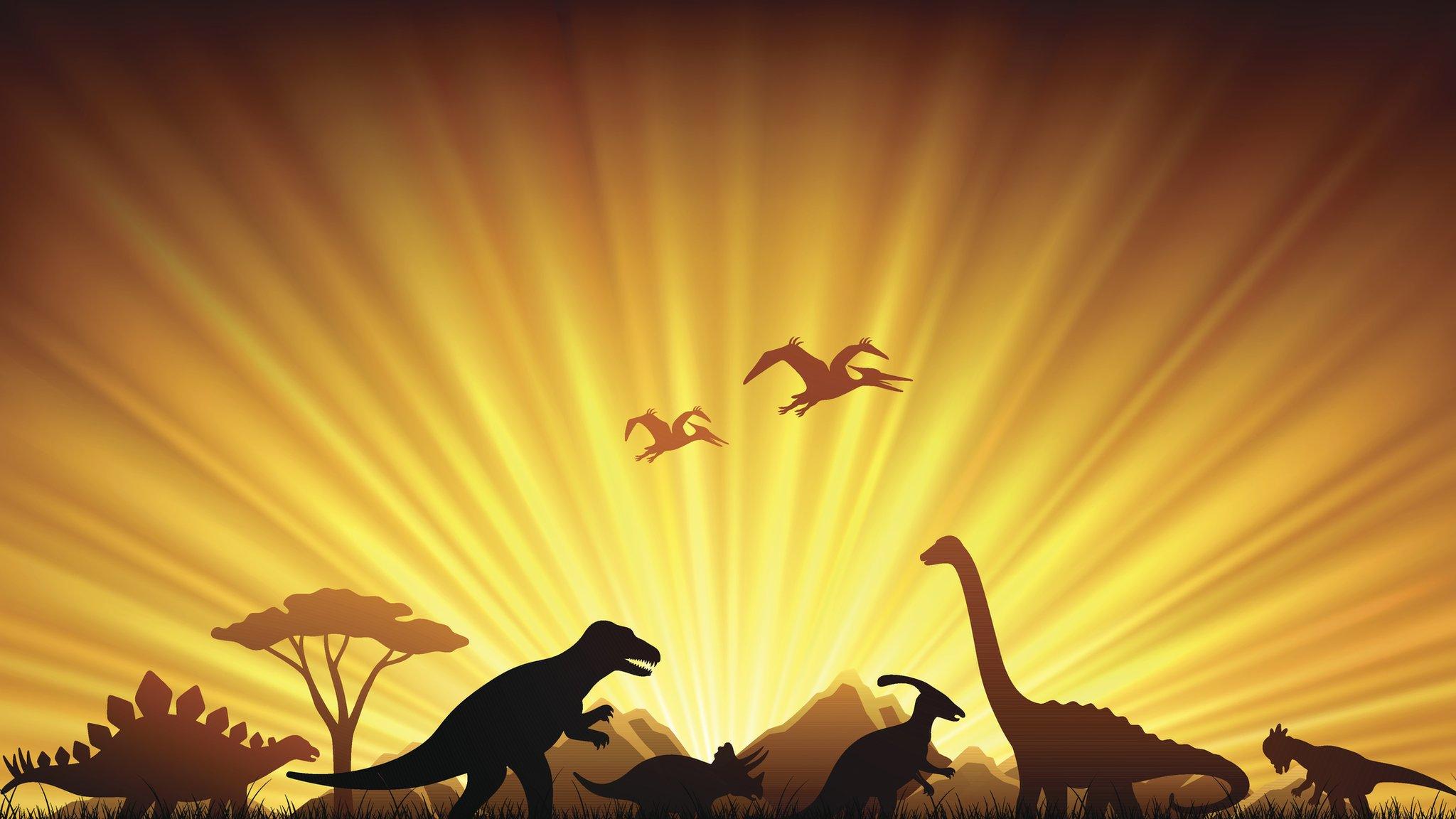Dust could be responsible for wiping out 75% of all species on Earth
- Published
- comments

Did dust wipe out the dinos?
Scientists in Belgium think they might have figured out what wiped out most of the dinosaurs from Earth - dust.
Sixty-six million years ago an asteroid struck the Earth off the coast of Mexico at the end of what was known as the Cretaceous period.
Dinosaurs living near the asteroid impact site would not have survived, however scientists were curious about how the rest of the dinosaurs died out.
The scientists at the Royal Observatory of Belgium decided to try to work it out. They ran computer-generated simulations - a digital versions of something that happened in real-life - to see what might have happened after the asteroid's impact.
What happened 66 million years ago?

The asteroid that hit the Earth 66 million years ago created the Chicxulub Crater, which is buried beneath the Yucatán Peninsula off the coast of Mexico.
According to research, the Chicxulub asteroid sent up clouds of sulphur-based gases into the Earth's atmosphere along with lots of silicate dust.
The impact triggered volcanic eruptions and wildfires around the planet, which sent soot and carbon dioxide into the air.
This caused the Earth to be plunged into darkness because of the dirt and dust in the air, causing a 'winter' which lasted for around 15 years.

The scientists say this "impact winter" is responsible for wiping out 75% of all plants and animals on Earth.
The dusty air blocked out the sun's light, meaning that plants couldn't photosynthesise - make their own energy to grow - causing most of them to die.
Which then meant that plant-eating dinosaurs had very little, or no food to eat, and when they died, food for meat-eating dinosaurs went too.
How did the scientists prove this theory?

Scientist Cem Berk Senel and his colleagues from Belgium analysed some dirt samples taken from North Dakota in the US, at the time of the Chicxulub impact.
They then put this information into a computer simulation to figure out what the climate would have been like at that time.
They discovered that although the sulphur gases were the first to cause the Earth to cool, by blocking sunlight, they only stuck around for eight years, compared to the silicate dust, which stayed in the air for around 15 years.
They also think that the dust alone caused the Earth's temperature to drop by around 15 degrees Celsius.
Cem and his team want to keep studying the asteroid impact and its after-effects, saying there are many more questions and answers left to uncover.
- Published25 June 2021

- Published30 June 2020

